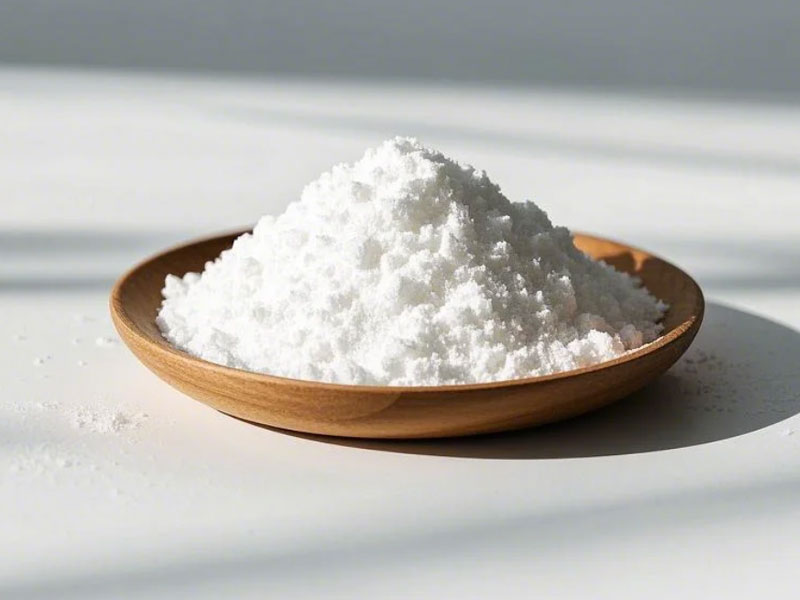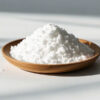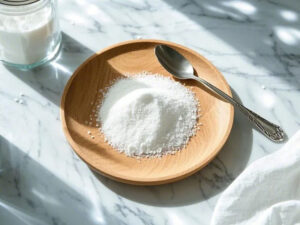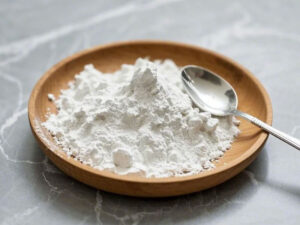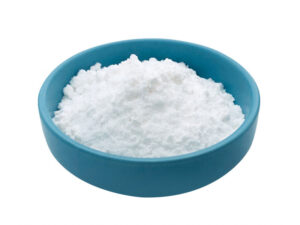What are Organic Isomaltoligosaccharides?
Organic Isomaltooligosaccharides (IMO) are certified organic, non-GMO prebiotic fibers derived from organic tapioca or rice starch via enzymatic conversion. These branched glucose oligomers resist digestion, nourish beneficial gut bacteria, and provide 50-60% of sucrose’s sweetness with minimal caloric impact (2 kcal/g). Available in powder and syrup formats, they are ideal for low-glycemic, diabetic-friendly, and gut-health-focused food and beverage applications. Certified USDA Organic, vegan, and allergen-free.
Specification
| Parameter | IMO Powder | IMO Syrup |
|---|---|---|
| Dietary Fiber Content | ≥90% (dry basis) | ≥70% (wet basis) |
| Appearance | White to off-white free-flowing powder | Clear to pale yellow viscous liquid |
| Moisture Content | ≤5% | ≤25% |
| Solubility | Fully soluble in hot/cold water | Fully miscible in aqueous solutions |
| Brix | – | 70-75° |
| Viscosity | – | 300-600 cP at 25°C |
| pH (10% solution) | 5.0-7.0 | 4.5-6.5 |
| Sweetness | 50-60% of sucrose | 50-60% of sucrose |
| Caloric Value | 2.0 kcal/g | 2.0 kcal/g |
| Packaging | 1kg, 5kg, 25kg resealable bags | 5kg jugs, 25kg pails, 200kg drums |
| Shelf Life | 24 months | 18 months |
Key Features & Benefits
- Prebiotic Action: Stimulates growth of Bifidobacteria and Lactobacillus (clinically validated).
- Low Glycemic Index: GI ≤ 2, safe for diabetics and keto diets.
- Heat & Acid Stable: Retains functionality in baked goods, UHT beverages, and acidic products.
- Clean Label: Free from GMOs, artificial additives, and major allergens.
- Global Certifications: USDA Organic, Non-GMO Project Verified, Halal/Kosher, GRAS.
Applications
1. Organic IMO Powder
- Bakery: Reduces sugar in cookies, muffins, and gluten-free bread while adding fiber.
- Nutrition Bars: Binds ingredients and boosts prebiotic content in protein bars.
- Supplements: Encapsulated prebiotic for gut health capsules and powders.
2. Organic IMO Syrup
- Beverages: Sweetens functional drinks, plant-based milk, and sports nutrition shakes.
- Dairy Products: Improves mouthfeel in yogurts, ice creams, and cheese spreads.
- Condiments: Replaces corn syrup in jams, syrups, and salad dressings.
Why Choose Us?
- Dual-Format Expertise: Tailor fiber delivery for dry or liquid formulations.
- Quality Assurance: Tested for purity, heavy metals, and microbial safety (ISO 22000).
- Sustainability: Ethically sourced from organic farms with eco-friendly packaging.
- Custom Solutions: Blend with probiotics, vitamins, or other prebiotics (e.g., FOS, GOS).
- Regulatory Compliance: Meets FDA, EFSA, and global organic standards.
FAQs
Q: Is IMO safe for diabetics?
A: Yes! With a glycemic index of ≤2, IMO does not spike blood sugar levels.
Q: Can IMO replace sugar in baking?
A: Yes—use IMO powder at 50-60% sweetness equivalence for reduced-calorie recipes.
Q: Does IMO cause digestive discomfort?
A: IMO is well-tolerated, but start with 5g/day to allow gut adaptation.
Q: Is the syrup vegan-friendly?
A: Absolutely! Both formats are plant-based and free from animal-derived ingredients.
Q: Do you offer private labeling?
A: Yes! Custom branding available for powder and syrup formats.
Packing

